If you’ve ever picked up Tata Pink Salt in one hand and Tata Himalayan Rock Salt in the other and thought,
“Why are there two? Which one am I supposed to buy?”
You’re honestly not alone.
Almost everyone gets confused, because both packets look fancy, both look Pink in colour and both kind of feel healthy. So obviously we assume one is somehow better.
But here’s the part nobody tells you:
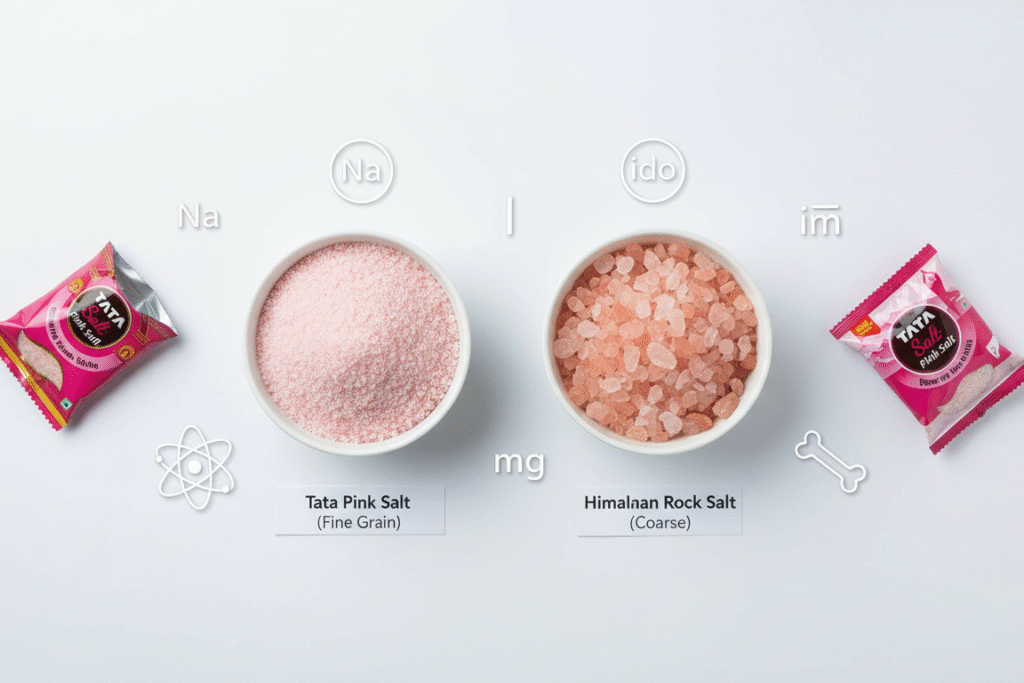
⭐ They’re practically the same thing. Seriously.
Same mountains, same source, same type of salt.
The only thing that truly changes?
How they look, how they’re described, and the texture of the grains.
Let’s break it down in a way that actually makes sense.
🔍What Makes Tata Himalayan Rock Salt (Sendha Namak) Unique?
✨ Origin
Tata Himalayan Rock Salt comes straight from raw Himalayan rock layers — the same kind of salt our elders have been using during fasts and traditional cooking for generations. It has that “old-world” purity to it… the kind you can trust without overthinking. It just feels natural, earthy, and familiar.
✨ Nutrients
This salt keeps things real and uncomplicated. It naturally contains:
- Sodium chloride in its purest form
- Small but present amounts of magnesium, calcium, and potassium
- Natural electrolytes that help your body stay balanced, especially when you’re fasting
No additives, no fancy promises — just what nature put there.
✨ Taste & Texture
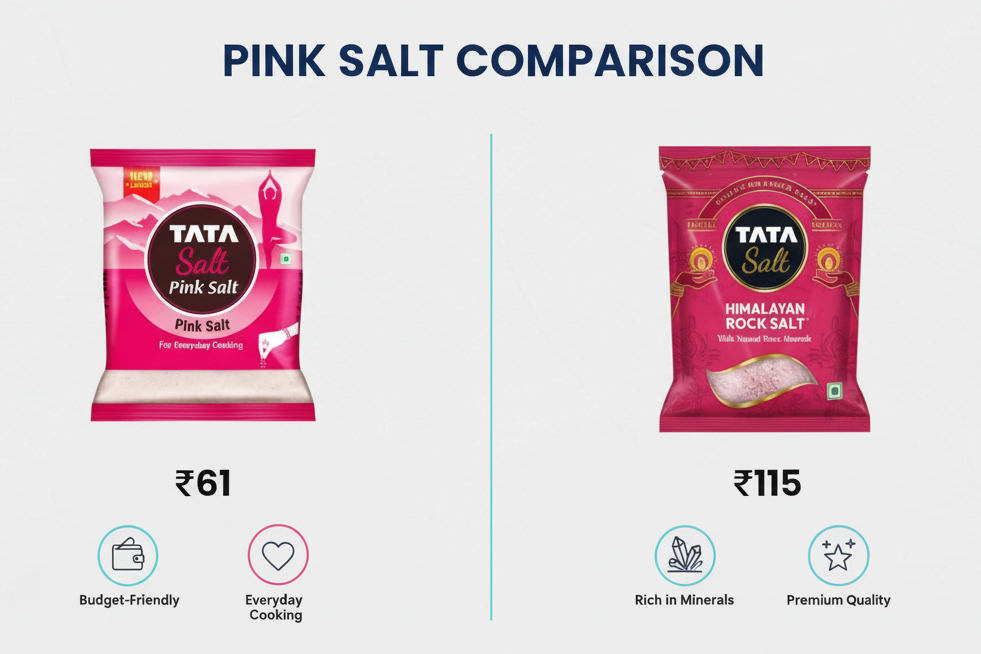
This salt has a slightly coarse, grainy texture—not too rough, not too fine.
And the taste? A little earthy, a little warm… the kind of flavour that reminds you of home-made vrat food or fresh chutney made in a stone silbatta.
It tastes best when you crush it fresh, because that’s when its real flavour comes alive.
✨ Best For
People don’t use rock salt for everything — they use it where it makes a difference:
✔ Vrat and fasting meals
✔ Chutneys with that freshly-ground kick
✔ Raitas, chaats, and simple dahi dishes
✔ Ayurvedic, detox-style drinks
✔ Recipes where you want a more “authentic,” old-school flavour
✨ Highlighted Benefits
- Easy on the stomach — feels lighter than regular salt
- Often used for soothing acidity
- Helps maintain electrolytes when you’re not eating full meals
- Gives food that rustic, homemade taste
- Perfect for anyone who prefers ingredients that feel natural and unrefined
👉 If you’re someone who enjoys traditional cooking or follows fasting rituals, Tata Himalayan Rock Salt just fits — it feels cleaner, purer, and more “real” in those moments.
🌸 2. What Makes Tata Pink Salt Special?
✨ Origin
Tata Pink Salt actually comes from the Himalayan salt deposits, but what you get at home is a simple, fine salt that feels familiar. It doesn’t feel fancy or complicated — just clean, soft crystals you can use exactly the way you use your regular salt.
✨ Nutrients
Nothing over the top — just the essentials your body needs every day:
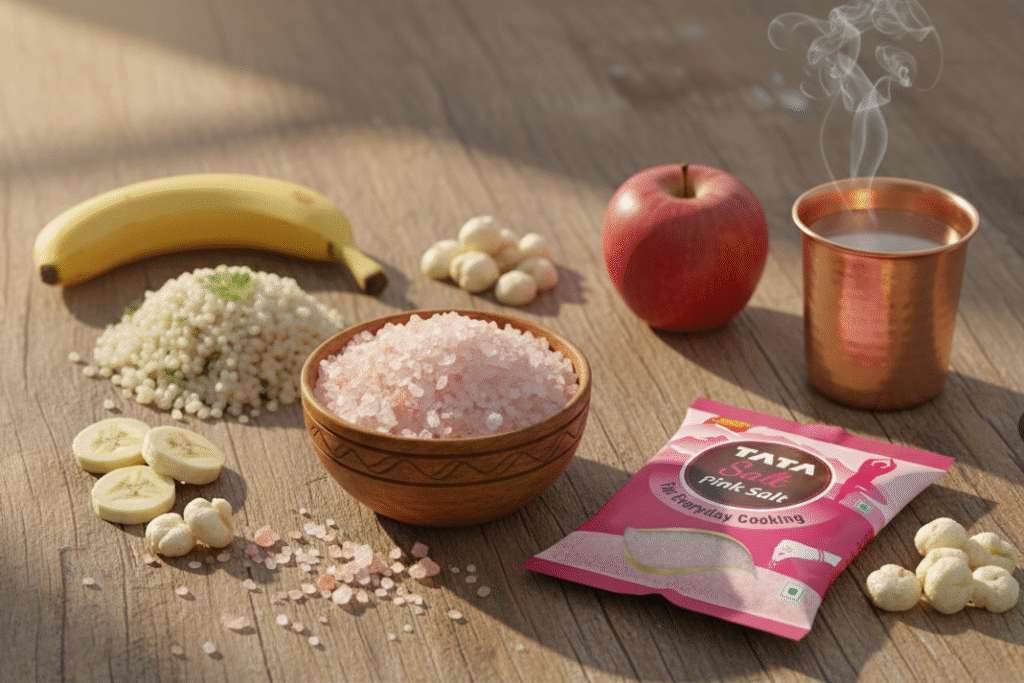
- Iodine, which helps keep your thyroid healthy
- Sodium, for basic hydration and electrolyte balance
- A few natural trace minerals that support digestion and overall wellness
It’s not marketed as a miracle salt — it just quietly does its job.
✨ Taste & Texture
If you’re someone who likes salt to blend in without changing the taste of the dish, this one works perfectly.
The grains are really fine, so they dissolve instantly — in hot dal, cold salads, dough, literally anything.
You get a clean, even salty flavour, not that sharp hit you sometimes get from refined salt.
✨ Best For
This is basically an everyday, no-drama kitchen salt:
✔ Daily dal, sabzi, and curries
✔ Salad dressings
✔ Baking (mixes evenly)
✔ Kids’ food — the taste isn’t harsh at all
✨ Highlighted Benefits
- Supports thyroid health (thanks to iodine)
- Helps maintain your body’s natural electrolyte balance
- Easy on the stomach
- Mixes into food quickly
- Affordable enough for daily use
👉 If you just want a smooth, gentle salt that works in every dish without you thinking twice, Tata Pink Salt is that no-fuss option.
🧂 3. The Real Comparison
| Feature | Tata Pink Salt | Tata Himalayan Rock Salt |
|---|---|---|
| Origin | Himalayan | Himalayan |
| Sodium | 38,000 mg | 37,400 mg |
| Iodine | 1.5 mg | 1.5 mg |
| Minerals | Not listed | Tiny trace amounts |
| Texture | Fine | Slightly coarse |
| Best For | Daily cooking | Fasting, chutneys |
| Price | ₹61 | ₹115 |
As you can see… the differences are tiny.
If you mixed them in two bowls, you probably couldn’t tell which is which.
🌿 4. Health Benefits

No matter which one you use:
- Mild, balanced taste
- A tiny amount of natural minerals
- No chemicals or anti-caking additives
- Good hydration support
- Helps digestion (especially during fasting)
But the truth? Salt is still salt. Use whichever one you like just use it in moderation.
🧪 5. The ONLY Differences That Actually Matter
⭐ 1. Iodine
Both Tata variants have iodine good for your thyroid.
(Some non-branded Himalayan salts don’t.)

⭐ 2. Texture
This is the main thing.
- Pink salt → fine, melts quickly in food
- Rock salt → coarse, great for vrat dishes & grinding fresh
⭐ 3. Price
Pink Salt: cheaper
Rock Salt: almost double
Not because it’s better just a different format.
🏆 6. So Which One Should YOU Buy?
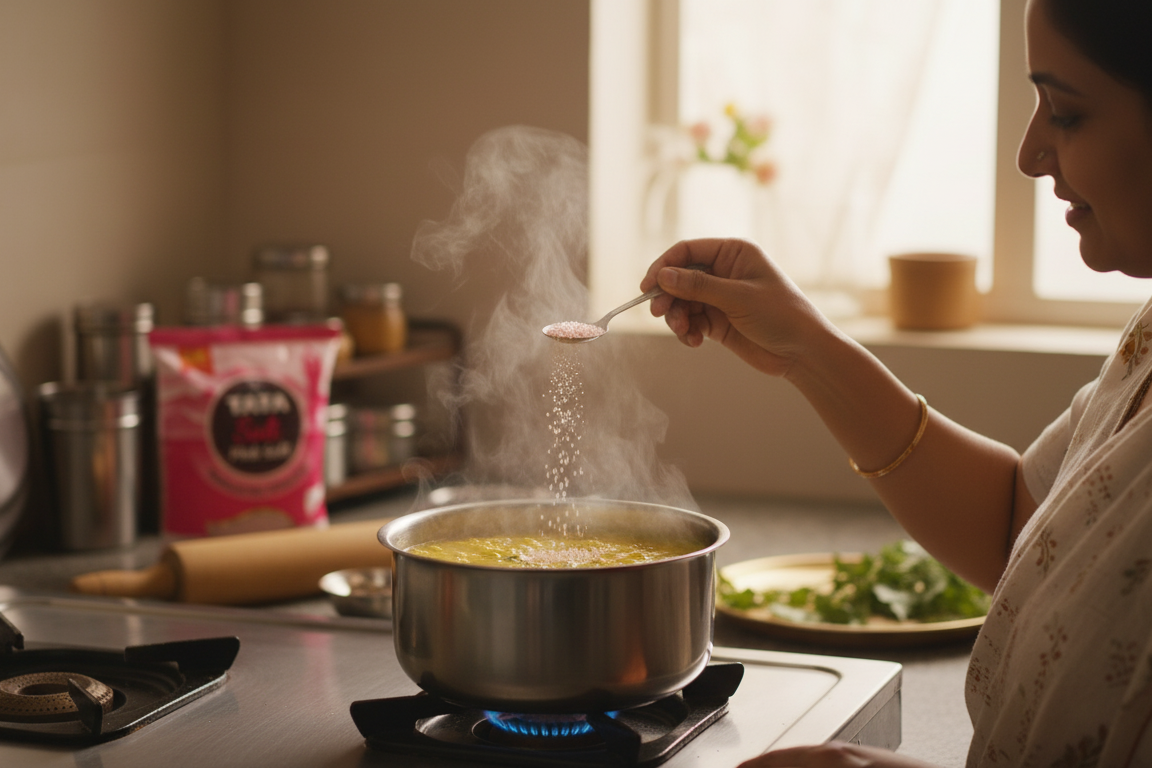
Choose Tata Pink Salt if:
- You want simple everyday salt.
- Prefer fine grains.
- Want something budget-friendly.
- Want iodine (for thyroid health).
Choose Tata Himalayan Rock Salt if:
- You fast (vrat).
- Like the traditional feel.
- Prefer slightly coarse grains.
- Like the idea of using “sendha namak” in certain recipes.
💡 7. Final Honest Truth
There’s no real winner here.
It’s not a competition.
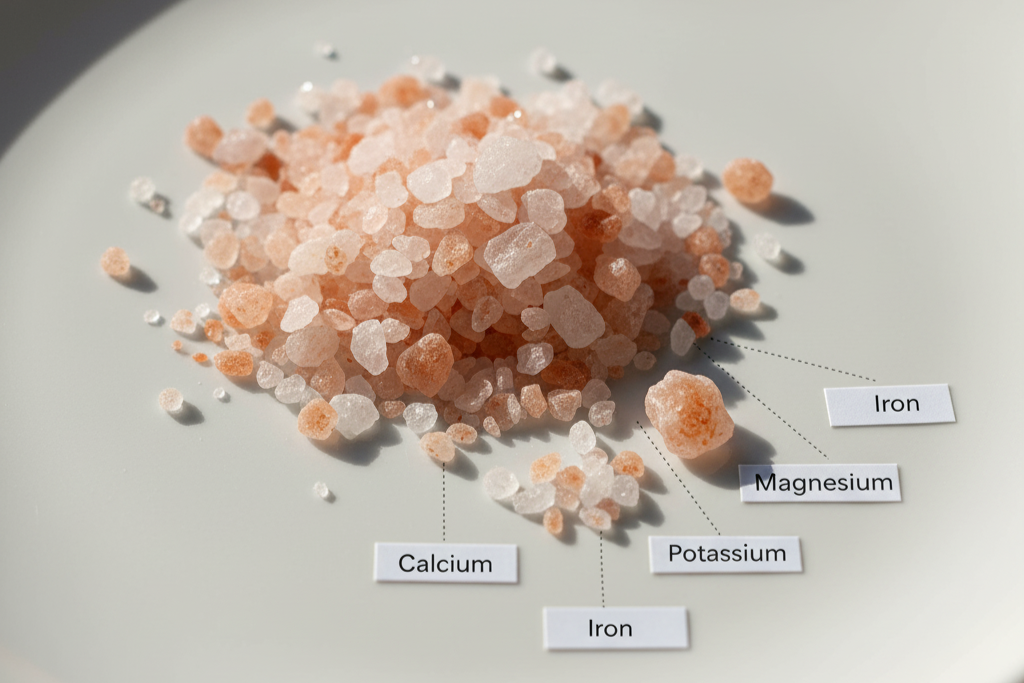
Both salts come from the same place and taste almost the same.
Both offer the same benefits.
The only differences you’ll notice are in:
- texture
- packaging
- price
- and the story printed on the packet
So the best salt is simply the one that fits your style of cooking.
And yes — you can grab both at the best price on Aap Ka Bazar whenever you want.


